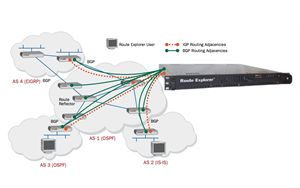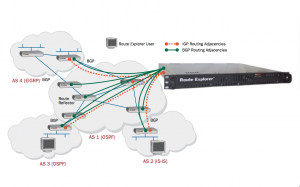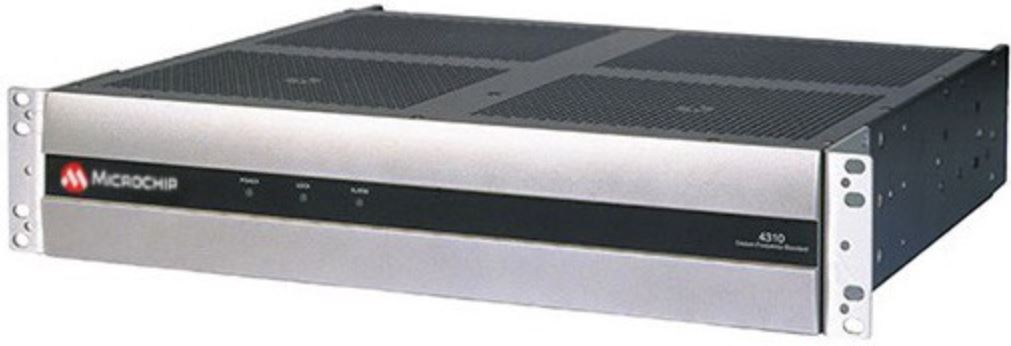Blueplanet ROA – Route Explorer
<< Back to Blueplanet ROAThe Route Explorer System
Blueplanet ROA – Route Explorer – IP networks are dynamic, automatically re-routing traffic when problems occur. Without the ability to visualize, monitor, analyze and model changes to the Layer 3 operation of the network, pinpointing and correcting problems, performing maintenance updates or planning network upgrades is tedious, manually-intensive and error-prone.
 Route Explorer™, the industry’s leading IP route and traffic analysis system, is designed for network engineers, architects, planners and operators managing today’s complex, mission-critical enterprise and service provider networks. It provides management visibility into routing and traffic behavior for all IGP and BGP protocols,
Route Explorer™, the industry’s leading IP route and traffic analysis system, is designed for network engineers, architects, planners and operators managing today’s complex, mission-critical enterprise and service provider networks. It provides management visibility into routing and traffic behavior for all IGP and BGP protocols,
multicast, MPLS VPNs and traffic engineering tunnels with real-time monitoring, historical reporting and modelling capabilities.
The foundation of the system is the Route Explorer routing analytics product. By passively monitoring the routing protocols that direct the flow of traffic throughout the network, Route Explorer constructs the routers’ view of the network, computing and displaying topology changes and routes in real time. It provides visibility into the dynamic routing operations across the entire network, enabling fast identification and resolution of difficult-to-diagnose problems, effective and trouble-free maintenance, and the ability to easily and accurately plan for network changes and optimisation.
-
Real-Time Monitoring & Analysis
From a single Route Explorer physical or virtual appliance, network engineers can view the real-time routing structure of their entire network as a seamless topology map, even when the network is running multiple protocols, spans multiple domains or Autonomous Systems, or utilises static routes that are not injected into routing protocols. Route Explorer detects loss of IP-layer connectivity immediately and can send alerts to a management console for corrective action to be taken. Routing instabilities or changes that go unnoticed by conventional management systems, but which impact network availability and performance, are visible within seconds, leading to early detection or prevention of service outages and reduced time-to-repair. Route Explorer supports all of the popular routing protocols in use today and scales to the largest networks with thousands of routers and multiple copies of the Internet routing table. -
Application & Service Path Monitoring
Engineers can quickly trace the precise path that service traffic is following through the network map and see if the traffic is experiencing routing instabilities or outages. Even if routing issues aren’t a direct root cause, path tracing helps engineers to more effectively localise the relevant part of the network to analyse further with other tools such as SNMP device managers, log managers, and application performance managers. The results are faster troubleshooting and lower MTTR. -
Network 'Playback'
Network engineers and NOC staff know that a minority of complex or intermittent network problems tend to have the heaviest impact on overall MTTR, while managers know that these problems drive up OPEX and lower responsiveness to end users. Route Explorer provides a unique, network-wide history of all routing changes which helps engineers and operators get to the bottom of these costly problems. By recording all routing events and providing full rewind and replay, Route Explorer enables problems to be quickly identified and diagnosed. Route Explorer’s advanced event filtering capabilities allow rapid isolation of the root cause to a single router or network address. -
Comprehensive Reports & Diagnostic Tools
Flexible reports can be generated for any historical time period, providing an overall understanding of network performance, while allowing quick isolation of potential problem areas. In many instances, network problems can be averted and resolved due to early awareness of anomalies. Data from reports can be useful in network maintenance and planning to understand trends, plan for network changes and growth, and verify changes made during scheduled maintenance. Sample reports include:- - Routing status
- - Routing stability
- - Routing comparison
- - Path reports
- - RIB Browser
- - RIB Comparison
- - BGP root cause analysis
- - BGP routing visualisation
- - Routing time comparison
- - Prefix diagnostics
- - Event analysis
-
Network Change Modelling
A large percentage of network outages are caused by misconfigurations. Route Explorer allows engineers to model network changes before they’re implemented, preventing outages from simple misconfigurations and even from network architecture errors that only become apparent when routing is altered. Engineers can simulate a broad range of changes, such as adding or failing routers, interfaces and peerings; adding or moving prefixes; and adjusting IGP metrics or BGP configurations. Critical initiatives such as data center migrations/consolidations, disaster recovery planning, change validation testing, or failure impact and redundancy analysis can be easily and accurately performed. Since Route Explorer automatically updates the network topology map through continuous routing protocol recording, there is no work needed to maintain or update the model—it is always current--making modeling easy and fast enough to use on an every-day basis. -
Real-Time Routing Alerts
Route Explorer provides a range of alerts that can be enabled selectively, allowing for monitoring of specific routing events or problem areas and early notification of potential failures. Alert notifications can be viewed on the Route Explorer console, sent to an SNMP-based network management system, or recorded to Syslog for consolidated problem reporting and management. Alerts include:- - Path change
- - BGP AS path change
- - Prefix state change
- - Router state change
- - IGP adjacency state change
- - BGP AS path redundancy
- - BGP prefix flood
- - BGP prefix drought
- Lower MTTR and improve staff productivity by speeding identification of complex problems
- Prevent costly maintenance errors by simulating network changes before implementation
- Boost network quality by proactively identifying conditions that could affect traffic delivery
- Avert costly service outages by alerting on changes to critical network redundancy
- View always-current network routing and traffic behavior with minimal management overhead
- Achieve rapid time to value and low TCO.




